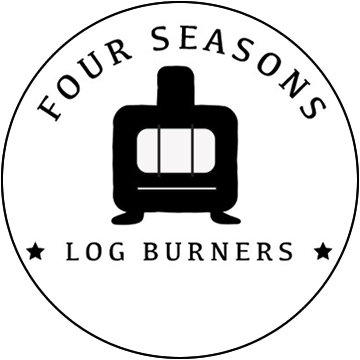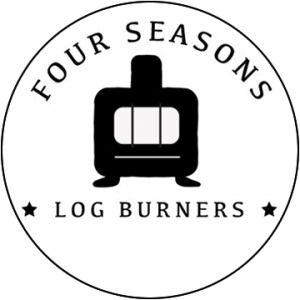If you are considering purchasing a multi-fuel or wood-burning stove for your home then we know how excited you will be to begin searching for the perfect product. However, it is important to keep in mind that an investment like this requires careful consideration and there are certain things that you should think about before committing to any particular stove.
We meet a lot of people who are taking the first steps towards improving their home with a stove and we feel very confident that we know what to look for in a wood-burning stove. In this guide, we will share our top tips that will help you choose the right multi-fuel or wood-burning stove for you.
Table of Contents
What To Look For In A Wood Burning Or Multi-Fuel Stove
Everybody is different and as such, the type of stove that might suit your home may not be as compatible with the next buyer. This means that carefully thinking about each of the following points will always keep you on track to finding the right product for your needs. If, after reading these tips, you still have questions, feel free to contact us to discuss your options.
Fuel
When it comes to fuel, there are a lot of things to think about. But the main concern for most consumers is what type of fuel they will be burning. As the name may suggest, a wood-burning stove is suitable only for burning wood, whereas a multi-fuel stove will allow you to use a variety of fuel types.
The type that you choose will depend on several factors. We will discuss some of these now but for a more detailed look into the pros and cons of each type of stove, check out our guide on the multi-fuel stove vs wood burning stove.
Initially, you may want to think about how efficient the stove is. For example, a wood burner is largely considered to be more efficient owing to the optimised features that are made especially for this type of fuel. If you intend to only use wood then we would recommend a stove designed for this purpose.
On the other hand, if you would like to experiment with different types of fuel such as coal or peat then your multi-fuel stove will be designed for this purpose. These stoves typically work better with smokeless fuels and have features that will optimise the performance when used with such products.
Storage Of Fuel
Depending on how frequently you will be using your stove, you may have to store a considerable amount of fuel. For log burners, it is essential that you have somewhere dry to store the wood. If wood contains more than 20% moisture, it can be much more challenging to burn and will give off a lot of smoke.
If you are going to be using coal for a multi-fuel stove, it is possible to purchase a coal store and these are relatively affordable. The good thing with these coal bunkers is that they come in varying sizes so even if your outdoor space is limited, you will likely be able to find one to meet your requirements.
When comparing a log store vs a coal bunker, users must consider the placement of the store. A log store can also come in varying sizes and it is entirely possible to craft your own. However, since it is imperative that the logs do not become wet, you must look at placing the store in the driest possible area.
Since a coal bunker is typically made from plastic and is all but impenetrable for water, a log store is generally made from wood. This means that if it is heavily exposed to the elements, the logs inside could begin to soak up moisture and begin to rot. For this reason, your log store should be protected with both a roof as well as ground protection to prevent water from seeping into the logs from underneath. With that in mind, your wood store will also need excellent airflow.
There are some stoves that will have a built-in wood store and these are ideal for people who only need to store a small amount of wood at any one time.
While you can, in theory, buy coal and logs by the bag to solve your storage problems, you will typically find that the cost gets lower the more you buy. For this reason, a lot of stove owners prefer to buy in bulk.
Availability Of Fuel
In most parts of the UK, it is relatively easy to have fuel delivered to your home. With such a wide array of fuels available on online marketplaces like Amazon, you can order fuel in the evening and it will arrive the next day.
However, a lot of people prefer to use local businesses such as wood yards and in this case, you will need to check out your local suppliers and what they offer. Regardless of whether you are looking for wood or coal, it can be useful to have a consistent local supplier who can deliver fuel on a regular basis.
Fuel Cost
One of the main reasons that more and more people are turning to a multi-fuel or wood-burning stove to heat their homes is to save on their energy bills. This is a great way to remain thrifty but you should consider how much it will cost to run the stove; different fuels come at varying costs.
On the whole, you can expect to pay anywhere between £110-£120 for enough wood to last half of winter. According to Moneyhub, owners will require between six and ten cubic metres of wood to see them through a harsh winter.
In contrast, you can expect to pay around £420 for 1000kg of smokeless fuel. The rate at which you will consume this will vary depending on the time of year and other heat sources in the home. But, as a general rule of thumb, 25kg of smokeless fuel will last a couple of days.
In addition to thinking about the cost of the fuel itself, you must also factor in any delivery charges that may apply.
Aesthetics
Nobody wants to install an ugly stove in their home but what appeals to one person may be horrific to another. We have a huge range of stoves, each with its own aesthetic appeal and it is vital that you take your time to look at the different styles to see what would fit into your home.
Heat Output Required
The whole point of installing a stove is to heat the room, however, if you purchase a stove that is too small for the space in which it will be installed, you won’t feel the full benefit. The heat output of a stove is given in kW for this reason, it is crucial that you take the time to calculate the correct size of stove you will need.
This might seem a little daunting but essentially, the process involves thinking about the dimensions of the room and comparing this with the heat output and ability of any particular stove. But we know that this can be tricky to figure out, so we have designed a stove size calculator to make things easier. Simply input the room dimensions and the type of insulation you have to find out what kW your stove needs to be.
Efficiency
When you purchase a stove, there will typically be an efficiency rating given but this can mean very little if you do not understand what it is referring to.
The efficient rating refers to the amount of heat that is wasted by going directly up the chimney as opposed to into the room. The more efficient a stove is, the better it will heat the room and the less you will spend on fuel.
Smoke Control Areas
In the United Kingdom, there are several regions that have been declared Smoke Control Areas. If you live in one of these areas, you are not permitted to have smoke coming from your chimney unless you are using one of the permitted fuels and typically, using a DEFRA exempt stove will be essential as you will have more choice of fuel.
In a smoke control area, many people will opt for a multi-fuel burner as this will allow them to burn smokeless fuels like the many smokeless coals available. If you are not sure whether you live in a smoke control area, you should check with your local council who will be able to advise you.
Location Of The Stove
While a multi-fuel stove or a log burner is not the largest appliance, you will need to make sure that you have the correct amount of space for it. Furthermore, you will also need to consider whether the appliance will be freestanding or if it will be installed into a pre-existing fireplace.
If you do not have a fireplace and wish to have one installed, this will also require you to think about where it will be located and its size.
Furthermore, a wood burner or multi-fuel stove will require a hearth. This does not need to be a huge installation but recommendations for its size are that the hearth has a minimum depth of 125mm.
Flue
When using this type of equipment, any smoke, gases or excess heat needs somewhere to go and this requires the use of a flue or chimney. If you have one, it may be possible to use this for your new stove.
However, you should also consider that a flue may need to be installed and this can require some extensive construction work. It is important to think about how much disruption this will cause, whether you have the correct space and the cost.
Cost
Wood burning stoves and multi-fuel stoves aren’t as expensive to initially purchase as you might think. Prices begin at around £800 and can go up into the thousands for a larger or more high-end model.
But as well as thinking about the cost of the stove, you will need to consider how much it will cost to install and whether you will need to pay for additional work such as installing a fireplace or flue.
Typical installation of a multi-fuel stove or a log burner can cost anywhere up to £1000, but this will vary from person to person.
Summary
Installing a wood burner or a multi-fuel stove is an exciting time but before you dive in and commit to anything, it is essential to consider a few things.
Homeowners must think carefully about the type of fuel they want to use as well as looking at whether they live in a smoke control area. Other things to factor in include the location of the stove and how much it will cost to install. Taking the additional time to think about the things we have discussed in this guide will allow you to make a decision that will benefit you and your home for many years to come.

